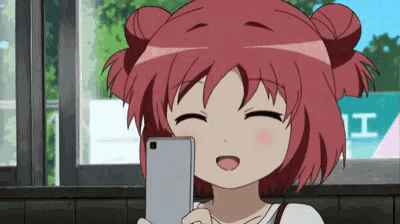I think it translates to "I ended up getting praised/complimented".
- ほめ(る): compliment/praise
- られ: added to indicate that the previous was done by someone else for the subject (Kyouko in this case, the subject not being given explicitly)
- ちゃった: ended up being the case
Kyouko seems to be gleeful, bragging a bit. That is my interpretation from the picture + でへー. The ー elongates the previous kana.











I try reading it first. Then I try to put it into a dictionary (jisho.org is good). If I need AI translation I use deepl.com . In this series by Namori the title is always the same as the text in the picture so you don't need to scan those with image recognition. For the effects (like でへー in this case), they almost always use kana only, so if you learn the kana you can easily read them without scanning. Learning kana is not so hard luckily. Reading kanji is a nightmare though and easily the hardest part of the language. Often I don't know how to read something, look it up, and then realize that if it were to be said out loud I would have understood it. Translating these like you have been doing lately is pretty good learning material. Good luck!